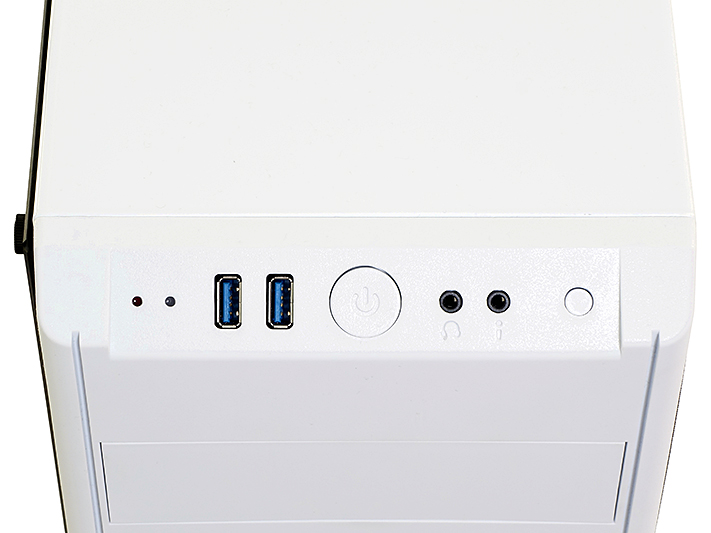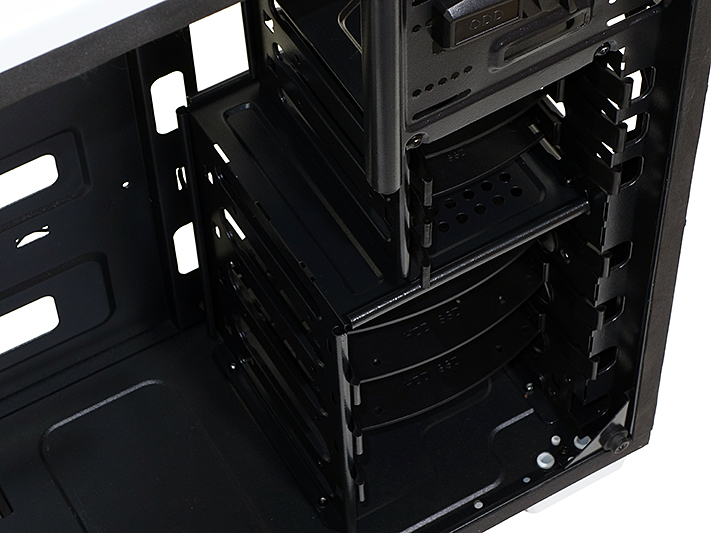Early Verdict
Buyers looking for superb style to house their entry-level hardware could find good value in the BitFenix Nova TG. Performance enthusiasts need not apply.
Pros
- +
The most-economical tempered-glass case we’ve tested
- +
Sufficient noise suppression at low cost
- +
Great looking paint
Cons
- -
Poor thermal performance
- -
Limited graphics card space
- -
Limited cable space
- -
No adequate passage for ATX12V/EPS12V cables
Why you can trust Tom's Hardware
Features & Specifications
I’ve been treating glass side panels as an approximate $30 upgrade per side for a while, understanding that smaller panels will cost a little less and larger panels a little more. It’s not that tempered glass is expensive, but that it adds to the shipping cost and increases the likelihood that the case will arrive damaged at the distributor. If the total cost of a panel including any potential post-production expenses is $20, and everyone who handles the case wants to make a little money, $30 wouldn’t be a bad deal for consumers. But then BitFenix comes along with a complete case that costs only twice the assumed price of that upgrade. Has the company destroyed my pricing theory?
Specifications
We can begin today’s analysis by noting that the Nova TG is the lightest glass-paneled case we’ve ever tested, weighing even less than many sub-$100 plastic-windowed steel cases. And we know thin steel side panels weigh much less than glass. This can only mean that either the glass is super thin, that the remaining steel is super thin, that the case is smaller than most competitors, or that there are economies on all fronts.
At 17.3” tall, the Nova TG has almost textbook mid-tower proportions. It would have been only 7.2”-wide without side-panel protrusions, and it even has a 5.25” bay cover centered within the space of three external bays.
The 4mm-thick glass panel isn’t very thin. The Nova TG isn’t any thinner than similarly-priced competitors on front-panel features, either. We find the now-standard pair of USB 3.0 ports, headphone and microphone jacks, power and reset buttons, and LEDs to show power and hard drive activity, angled around 45° at the top of the face panel to ease access in both desktop and under-desk placements.
BitFenix didn’t skimp on power supply dust filter. It’s a standard nylon screen version that can just as easily be rinsed clean as blown out or vacuumed. It is a little short, since the Nova TG doesn’t have a bottom-panel fan mount to make use of the same filter.
The white exterior paint didn’t suffer from noticeable economies either, being both smooth and shiny, and BitFenix even painted the interior a stylish black. Yet we do see the first inklings of the Nova TG’s economy from the rear, with its side panel bubble for stuffing cables and its knock-out slot covers. The Nova TG doesn’t even include any replacement slot covers in its installation kit.
Cracking open the right side-panel, we find negligible space between the back of the motherboard tray and the side panel’s mounting flange. Indeed, the side bubble noted above is an actual requirement for running cables behind the motherboard; there's a mere 5/8” of space beneath the bubble. Also notice that the motherboard tray steps inward towards the drive bays at the front of the case, to further assist cable management.
Get Tom's Hardware's best news and in-depth reviews, straight to your inbox.
Pulling away the single-5.25”-bay plastic façade, we find three 5.25” bays underneath. Users who’d like to put 3.5” drive adapters here will need to use their own, as BitFenix includes none. We also find a fan tray capable of holding either two 120mm fans (or one 140mm), with its single factory-installed, unfiltered fan on the lower mounting holes.
Crafty builders will notice around 29mm of space inside the plastic face panel, which would allow a 25mm-thick radiator to be mounted there. The unused lower 5.25” bay could even serve as a place to pass through cooling lines, though there isn’t much space at the bottom for the radiator’s end cap. The 45° angle there comes right up to fan level.
Two drive cages are blind riveted in place (probably not POP brand), with the upper cage designed to hold three 2.5”-drive trays and the lower cage designed to hold four 3.5”-drive trays. Only three of the 3.5” trays are included.
MORE: Best Cases
MORE: All Case Content
-
Crashman One thing that I didn't get to in the review was that the SSD cage side that I had to remove was manufactured with two sets of holes, one set drilled and the other pierced and threaded. The drilled holes were for blind rivets, the threaded holes for screws.Reply
Lacking anything that resembled a dentist drill, I couldn't get access to the rivets without destroying the cage panel I removed. It would have been ridiculously easy for the manufacturer to use screws instead of rivets, since the machining was already done.
Had they used screws for that panel instead of rivets, and had they included a couple slot covers, they might have found me a little more flexible in the final analysis. -
SirNathan Why the heck would they include 2x internal 5.25" drive bays? It seems pointless. Either make all 5.25" bays external, or use the extra space for 3.5" bays. What are people going to use internal 5.25" bays for, a couple Quantum Bigfoot hard drives?Reply -
Crashman Reply
This is a low-cost way of modernizing the look of a low-cost 90's chassis. The original chassis was for a case that had three external bays. Putting the front-panel connectors on top of the revised face panel put the squeeze on the top bay, and they only wanted one bay, so...the two empty bays are left to do nothing. But you can put a 3.5" drive adapter in them, or if you're tricky maybe even a multi-SSD adapter.20053136 said:Why the heck would they include 2x internal 5.25" drive bays? It seems pointless. Either make all 5.25" bays external, or use the extra space for 3.5" bays. What are people going to use internal 5.25" bays for, a couple Quantum Bigfoot hard drives?
-
Kennyy Evony make the entire case acrylic with glass panels for additional glossy look and stability. call it Ice slabReply -
Kennyy Evony oh, and have multiple acrylic layers that can be attached to outer case that would double up as a waterfall and as a reservoir for liquid cooling on outside of the case to dissipate heat even faster with thick wire frame against damage and white led lighting built in in such a way that the entire acrylic parts would absorb led light into a contemporary glow effect.Reply








